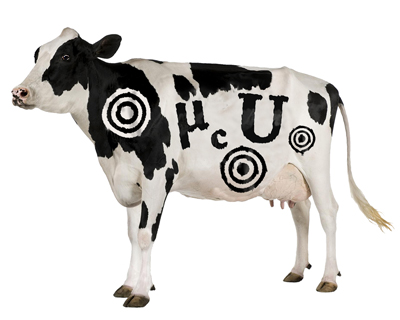Quality Requirements
New Goals for MU Goals
CCLM has published a set of 13 analytical performance specifications for measurement uncertainty. Only 7 years after the Milan Consensus Meeting. And only 15-20 years after MU took center stage in the laboratory quality debate.
APS for MU: The New Era of allowable measurement uncertainty (MUA? AMU? AU?)
 Sten Westgard, MS
Sten Westgard, MS
July 2021
Clinical Chemistry and Laboratory Medicine broke new ground again. It published the first (to our knowledge) set of concrete goals for measurement uncertainty:
Performance specifications for measurement uncertainty of common biochemical measurands according to Milan models, Federica Braga and Mauro Panteghini, CCLM 2021; 59(8):1362-1368.
The debate of MU vs TEa, which has provided a little drama to what can be otherwise a very dry subject for the last 20 or so years, has often lacked a core comparison: goal to goal. MU has often asserted its paramouncy without providing any proof. That is, the theory of MU is superior in every way to TEa, but there were no MU performance specifications to compare to TEa performance specifications.
Finally, that has changed. MU now has 13 APS.
| Measurand | Milan Model | APS for standard desirable MU, % |
| Plasma glucose | outcome-based (best) | 2.00% |
| Blood HbA1c | outcome-based (best) | 3.00% |
| Blood total hemoglobin | outcome-based (best) | 2.80% |
| Serum 25-Hydroxyvitamin D3 | outcome-based (best) | 10.0% |
| Plasma sodium | Biological Variation (2nd best) | 0.27% |
| Plasma potassium | Biological Variation (2nd best) | 1.96% |
| Plasma chloride | Biological Variation (2nd best) | 0.49% |
| Plasma total calcium | Biological Variation (2nd best) | 0.91% |
| Plasma creatinine | Biological Variation (2nd best) | 2.20% |
| Plasma urea | Biological Variation (2nd best) | 7.05% |
| Plasma total bilirubin | Biological Variation (2nd best) | 10.5% |
| Plasma alanine aminotransferase | Biological Variation (2nd best) | 4.65% |
| Plasma C-reactive protein | State of the art (3rd best) | 3.76% |
The biological derivation for the desirable MU APS is very similar to what is described for desirable allowable imprecision: 0.5 *CVI.
But there is one additional significant wrinkle, the MU APS is for total MU budget the MU. And that includes MU that might be consumed by higher-order references before the laboratory measurement even gets made. Therefore, "[w]e recommended that no more than one-third of total MU budget should be consumed by the MU of higher-order references and no more than half of the budget is used when MU is combined at the commercial calibrator level."
In other words, the lab MU APS (which is really just the CV budget) is actually one-half of the total MU budget:
| Measurand | Milan Model | APS for standard desirable Total MU, % |
APS for standard desirable Lab CV, % |
| Plasma glucose | outcome-based (best) | 2.00% | 1.00% |
| Blood HbA1c | outcome-based (best) | 3.00% | 1.50% |
| Blood total hemoglobin | outcome-based (best) | 2.80% | 1.40% |
| Serum 25-Hydroxyvitamin D3 | outcome-based (best) | 10.0% | 5.0% |
| Plasma sodium | Biological Variation (2nd best) | 0.27% | 0.14% |
| Plasma potassium | Biological Variation (2nd best) | 1.96% | 0.98% |
| Plasma chloride | Biological Variation (2nd best) | 0.49% | 0.25% |
| Plasma total calcium | Biological Variation (2nd best) | 0.91% | 0.46% |
| Plasma creatinine | Biological Variation (2nd best) | 2.20% | 1.1% |
| Plasma urea | Biological Variation (2nd best) | 7.05% | 3.03% |
| Plasma total bilirubin | Biological Variation (2nd best) | 10.5% | 5.25% |
| Plasma alanine aminotransferase | Biological Variation (2nd best) | 4.65% | 2.38% |
| Plasma C-reactive protein | State of the art (3rd best) | 3.76% | 1.88% |
The next question to ask: how many methods out there can achieve this level of precision? If that's not possible, one can always revert to the minimum analytical performance specification, which would be 0.5 *CVI. In that case, the glucose total MU APS would increase to 3.0%, and the minimum lab CV APS would be 1.5% (instead of the 1.0% in the table above)
If we take some TEa goals and use these CV specifications, we get some interesting results.
Given a TEa of 6.0% for HbA1c (from CAP/NGSP), and the above-derived desirable CV specification of 1.5%, and zero bias, the MU APS leads to a Sigma-metric of 4.0. This would need a 1:3s/2:2s/R:4s/4:1s rules with N=2 & R=2 or N=4 & R=1. Achieving the desirable MU, in other words, does not allow you to achieve Six Sigma. In this case, therefore, MU is a less stringent APS than the TEa.
Given a TEa of 0.7% for sodium (from https://biologicalvariation.eu/meta_calculations on 7/27/21) and the above-derived desirable CV specification of 0.14% (really 0.135%) and zero bias, the MU APS leads to a Sigma-metric of 5.19. Here, the MU APS getting closer to the TEa APS. This assumes you have mastered the challenge of finding a sodium method with 0.14% CV and no bias, of course.
Given a TEa of 17.8% for urea (from https://biologicalvariation.eu/meta_calculations on 7/27/21) and the above-derived desirable CV specification of 3.03% (really 3.025%) and zero bias, the MU APS leads to a Sigma-metric of 5.88. This is where the difference in the demands of a MU APS and the TEa APS begin to narrow. Both are striving to reach 6 Sigma.
Currently, the Biological Variation database of the EFLM stands at 238 entries, which means there are 129 TEa APS that can be generated. At the same time, MU APS is currently only 13. The EFLM database calculators currently only support RCV and APS, but possibly an automatic MU APS calculator could be added.
The challenges for MU are still large. These latest specifications do not diminish the practical problems in implementing MU.
